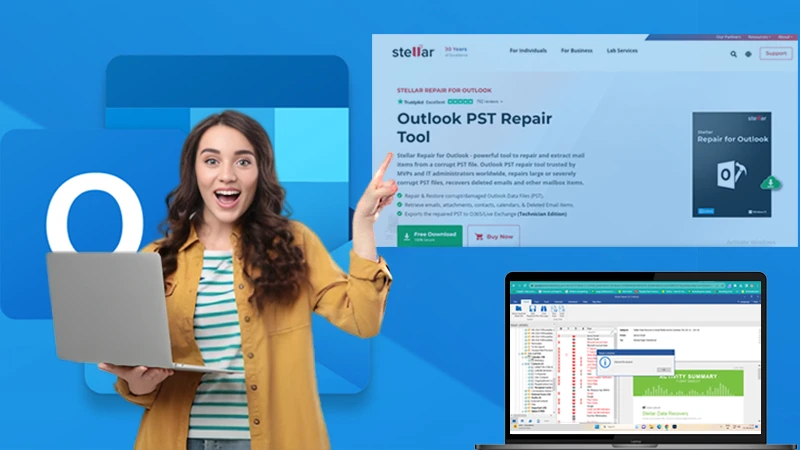Supply Management Automation Tools: How to Choose the Right One

As any business owner knows, managing supplies can be a time-consuming and frustrating process. From keeping track of inventory levels to dealing with late deliveries, there are many moving parts to juggle. Fortunately, several supply management automation tools are available to help streamline the process.
Supply management automation tools are part of software development outsourcing. Thes software packages help companies to automate their supply chain management. This includes the management of suppliers, the procurement process, and the manufacturing process. The goal of using these tools is to improve efficiency and optimize the supply chain.
These systems allow businesses to track their inventory levels in real-time, making it easy to reorder supplies when necessary. In addition, many software systems come with features such as automated ordering and delivery tracking, which can further reduce the amount of time and effort required to manage supplies. The most common type of Supply Management Automation Tool is a Supply Chain Management System (SCM). Other popular tools include Enterprise Resource Planning (ERP) systems and Manufacturing Execution Systems (MES).
So, how do you choose the right supply management automation tool for your business? To choose the right tool for your company, it is important to identify your needs and then research which tool will best meet them. Let’s look at the important features to help you choose the right automation tool.
ERP Integration
When choosing the right supply management automation tool, integration with ERP systems is key. ERP systems provide a centralized repository of information that all members of an organization can access. This is essential for ensuring that everyone is working with the same data and that decision-makers have visibility into all aspects of the business. If you have a legacy system in place, it may not be able to interface with newer automation tools. In this case, you may need to replace your existing ERP system to take advantage of the latest supply management technology. On the other hand, if you have a modern ERP system in place, it should be able to interface with most leading automation tools.
By integrating with an ERP system, a supply management automation tool can provide real-time data on inventory levels, supplier performance, and shipping schedules. This information can then be used to decide where to source materials, how to manage production, and when to ship products. In short, integration with an ERP system is essential for any organization that wants to optimize its supply chain.
Order Processing
Another important feature to look for in a supply management automation tool is the ability to streamline the order processing. In many cases, businesses use separate systems for managing their inventory and processing orders. This can lead to errors and inefficiencies, as data must be manually entered into multiple systems.
A good supply management automation tool will allow you to manage your inventory and process orders from a single platform. This will save you time and ensure that your data is accurate. In addition, many tools come with features such as minimum stock level alerts, which can help you avoid stock-outs.
Delivery Tracking
Another useful feature of supply management automation tools is the ability to track deliveries. This information can be used to optimize the delivery schedule and ensure that products are delivered on time. In some cases, delivery tracking may also be integrated with GPS systems, which can provide real-time information on the location of deliveries. This is particularly useful for businesses that need to track shipments across a large geographical area.
Pricing
When it comes to pricing, there is a wide range of options available for supply management automation tools. Some tools are offered as a subscription service, while others are sold as one-time licenses. In addition, many tools come with different levels of functionality, which can impact the price.
As you consider the cost of a supply management automation tool, it is important to consider the return on investment (ROI). In many cases, the upfront cost of a tool will be offset by the efficiency gains and cost savings that it delivers. As such, it is important to consider the long-term benefits of a tool before deciding on price.
Scalability
One of the most important factors to consider when choosing a supply management automation tool is scalability. A tool that can’t keep up with the demands of your growing business will only create bottlenecks and frustration. Cloud-based tools are a great option for businesses that need to scale quickly and easily. There’s no need to worry about installing or configuring new hardware with cloud-based tools. Simply add new users and licenses as you need them. Cloud-based tools also make it easy to collaborate with team members in different locations. And if you ever need to scale back, it’s just as easy to remove users and licenses. That flexibility can be a gamechanger for businesses that are constantly evolving.
User-friendliness
When it comes to supply management automation tools, user-friendliness is key. A user-friendly system will be easy to navigate and intuitive to use. Furthermore, it should be able to handle various tasks, from basic inventory management to more complex supply chain planning. The last thing you want is for your employees to struggle with a complex and convoluted system. By investing in a user-friendly supply management automation tool, you can save yourself a lot of headaches down the line.
Demand Forecasting
Another important feature to look for in a supply management automation tool is the ability to forecast demand. This information can be used to plan production and ensure enough stock to meet customer demand. In many cases, demand forecasting can also be integrated with sales data to provide a complete picture of future demand. This information can then optimize pricing, promotion, and other marketing strategies.
Bottom Line
When it comes to choosing a supply management automation tool, you need to consider several factors. Make sure to keep these factors in mind as you evaluate different options. You can streamline your supply chain and take your business to the next level with the right tool such as the OEM platform, Part Analytics.










